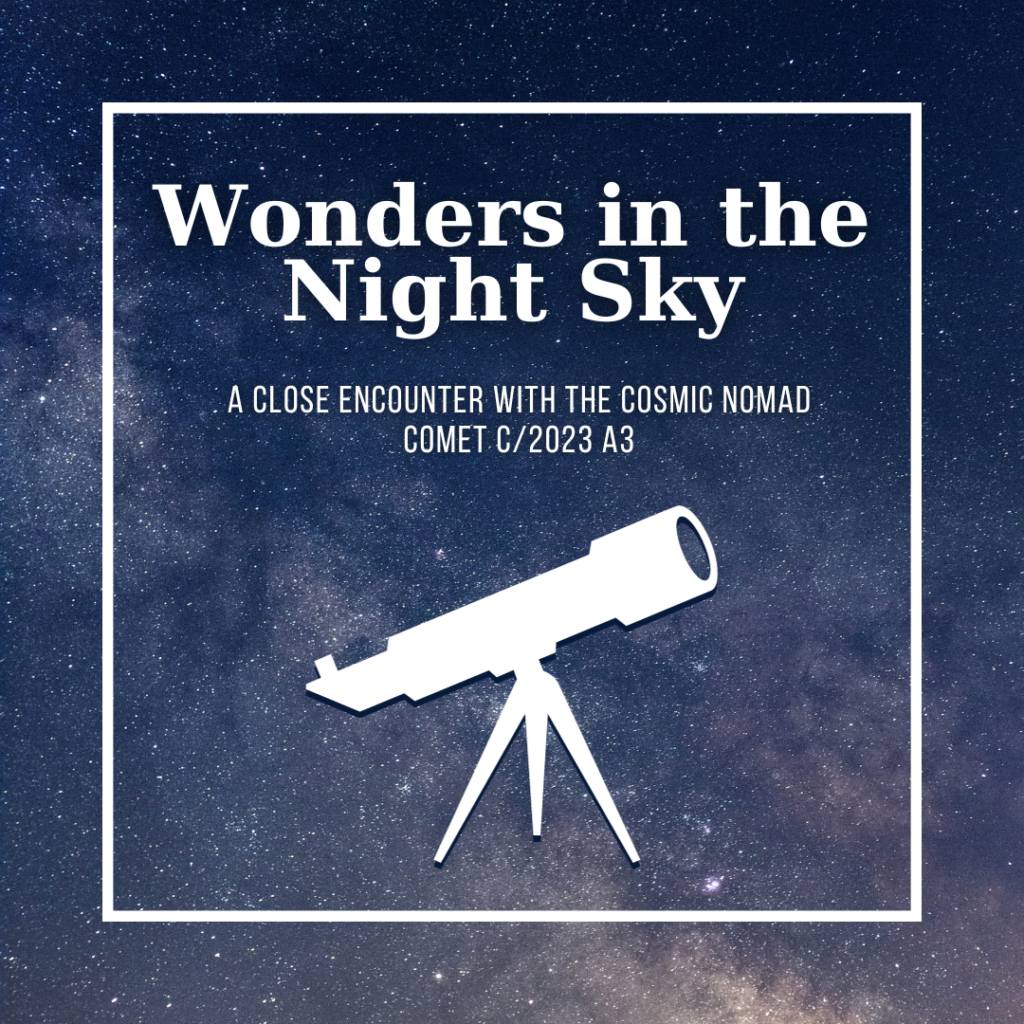Comet C/2023 A3: Tsuchinsan-ATLAS and the Legacy of Comets

We never do seem to run out of wondrous things to observe and study, and we’ve become at least somewhat adept at looking ahead to see what the next source of awe may be.
In late 2024, comet C/2023 A3, named Tsuchinsan-ATLAS, will make a close pass to Earth, with less than 0.5AU (70,600,000 km) at perigee on October 12th, 2024. When it enters the inner Solar System, it may become visible in the Northern Hemisphere in September as it approaches its closest point to the Sun, or perihelion. We will lose track of it for a bit, but it will become easily visible as it begins the journey back towards the Oort Cloud.
Of course, this isn’t the first comet we’ve been able to gaze up towards. We’ve all heard about Halley’s Comet (1P/Halley), which last visited Earth in 1986, allowing us to send several probes, which became known as the Halley Armada, to study it and gather images. Unfortunately, the comet’s orbital path at the time made viewing it from Earth difficult, but not impossible.
The real treat, however, came in 1997 with the arrival of Hale-Bopp (C/1995 O1). Discovered in 1995, Hale-Bopp was so massive and bright that it remained visible for a year and a half, and it was also the first comet to be trackable on the internet, which was relatively new at that time.
A note about how comets are named. In many cases, a comet will have both a catalog designation and a name. The designation consists of the type of comet it is; P for periodic orbits, C for single-encounter comets, D for those which get destroyed during their travel, and X for comets that have been observed but can’t be verified. After that, the year in which it was discovered is noted. The next letter indicates the time of year in which it was first observed, with A meaning the first half of January, B meaning the 2nd half of January, C for early February, and so on, with the letter I remaining unused as it resembles a 1. Lastly, the number indicates the order in which it was found.
Therefore, C/2023 A3 is a single-encounter comet, the third to be verified in the first half of January, 2023.
Naming a comet, though, is based on the scientist(s) or organization(s) that verify its existence.
We’ve been looking at comets for thousands of years now, though we haven’t always understood what they were. A great many ancient societies recorded seeing comets, and most of those sightings were likely to have been Halley’s Comet, as it has a predictable orbital period.
Some of the earliest known scientific records of a comet date back to ancient Greece, when the philosophers Aristotle, Ephorus, and Callisthenes reported what came to be known as the Great Comet of 371 BC, though the philosophers and astronomers of the day were divided as to whether it was a celestial or meteorological phenomenon, and Ephorus claimed that it bifurcated into 2 smaller bodies.
Ancient records from China also depict comet observations, which were generally considered harbingers of doom or disaster, and on several occasions, the sightings served to influence decisions on how to proceed as a society. Emperor Ruizong of Tang even stepped down from his throne after seeing a comet in 712 CE.
In Mexico, comets were thought to be types of stars, foretelling the passing of leaders and rulers.
Romans, on the other hand, went so far as to build a temple to comets, and Caesar Augustus interpreted one as a sign of good fortune as it appeared soon after the beginning of his reign.
However, in Norse mythology, Odin, along with his brothers, Vili and Vé, felled the great beast Ymir, a giant born of fire and ice, after which they formed the Earth with the various parts of Ymir’s body, with comets being formed from the skull as it disintegrated, after it was held up by four dwarves.
Obviously, we’ve taken great strides in our understanding of these stellar wanderers, a great many of which call the Oort Cloud their home, but still find time to visit the inner solar system from time to time.
How luminous Tsuchinsan-ATLAS will appear upon arrival is, at yet, unknown, but with less than a year until arrival, it will soon be time to get out the telescopes and ensure they’re ready to look towards the western horizon.
But the best part is that we don’t even have to worry about it signaling the end of the world anymore.
And that will be worth looking for!

